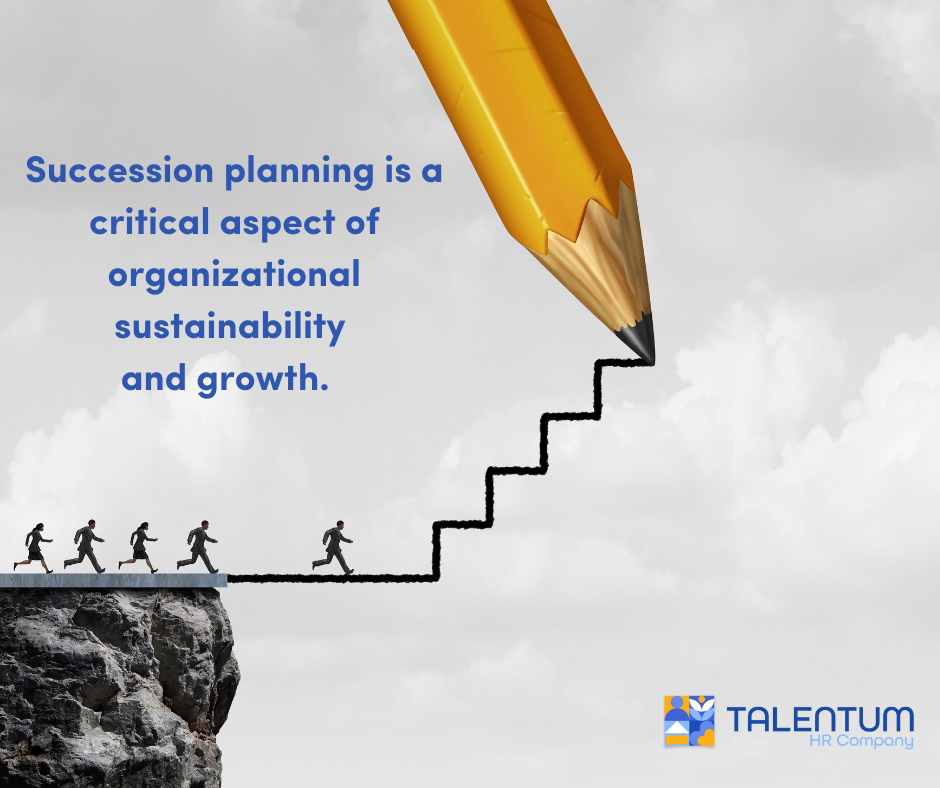Ensuring a Smooth Transition in Leadership
Navigating the succession of positions is an important aspect of any long-term sustainability and growth plan that an organization has to have. Whether it’s a family-owned business, a corporate entity, or a non-profit organization, the process of passing the torch from one leader to another requires careful planning and execution. In this blog post, we will explore the key elements of a successful succession plan and provide insights into how organizations can navigate this complex process while minimizing disruption and maximizing continuity.

Understanding the Importance of Succession Planning
Succession planning is not only about filling a leadership vacuum but also about ensuring the smooth continuity of the organization’s mission, vision, and values. It allows for the identification and development of potential future leaders while mitigating risks associated with leadership transitions.
Identifying and Nurturing Talent
Effective succession planning begins with identifying potential candidates within the organization who possess the necessary skills, knowledge, and leadership qualities. Providing them with opportunities for growth, mentoring, and training ensures a pool of capable successors.
Creating a Succession Roadmap
A well-defined succession roadmap outlines the timeline, criteria, and process for selecting and transitioning to a new leader. It should consider factors such as the current leader’s retirement plans, strategic goals of the organization, and the readiness of potential successors. A clear plan minimizes uncertainty and enables a seamless transition.
Communicating and Involving Stakeholders
Transparency and effective communication are crucial during the succession process. It is essential to keep employees, board members, shareholders, and other stakeholders informed about the upcoming transition, ensuring they understand the reasons behind the change and feel confident in the organization’s future.
Knowledge Transfer and Mentorship
A successful transition involves more than just changing titles. It requires the transfer of institutional knowledge and mentorship from the outgoing leader to the successor. Encouraging a period of overlap where both individuals work together can facilitate a smoother transfer of responsibilities and ensure a continuation of organizational culture.
Assessing External Candidates
In some cases, organizations may need to consider external candidates for leadership positions. This requires a careful evaluation process, including thorough assessments of skills, experience, cultural fit, and alignment with the organization’s values. Balancing internal and external candidates can bring fresh perspectives while maintaining continuity.
Managing Resistance and Emotional Impact
Leadership transitions can evoke emotions and resistance within the organization. It is crucial to acknowledge and address these feelings by fostering open dialogue and offering support to employees who may find the change challenging. Engaging with teams and providing them with opportunities to voice concerns can help alleviate anxiety and facilitate a positive transition.
Monitoring and Evaluating Succession Plan
Once the succession plan is implemented, it’s important to monitor its effectiveness and make necessary adjustments along the way. Regular evaluations of the new leader’s performance, employee morale, and overall organizational health can provide valuable insights and ensure the plan’s success.
Succession planning is a continuous process that requires long-term vision and careful execution. By investing in identifying and developing talent, creating a clear roadmap, fostering open communication, and providing support during transitions, organizations can ensure a smooth succession process. Effective succession planning not only safeguards an organization’s future but also builds a foundation for sustainable growth and continued success.
How can we help you navigate the succession plan for your company? In Talentum HR we specialize in consultancy, understanding the unique needs of our clients, supporting their businesses every step of the way and helping them grow and reach the level where you should be.

